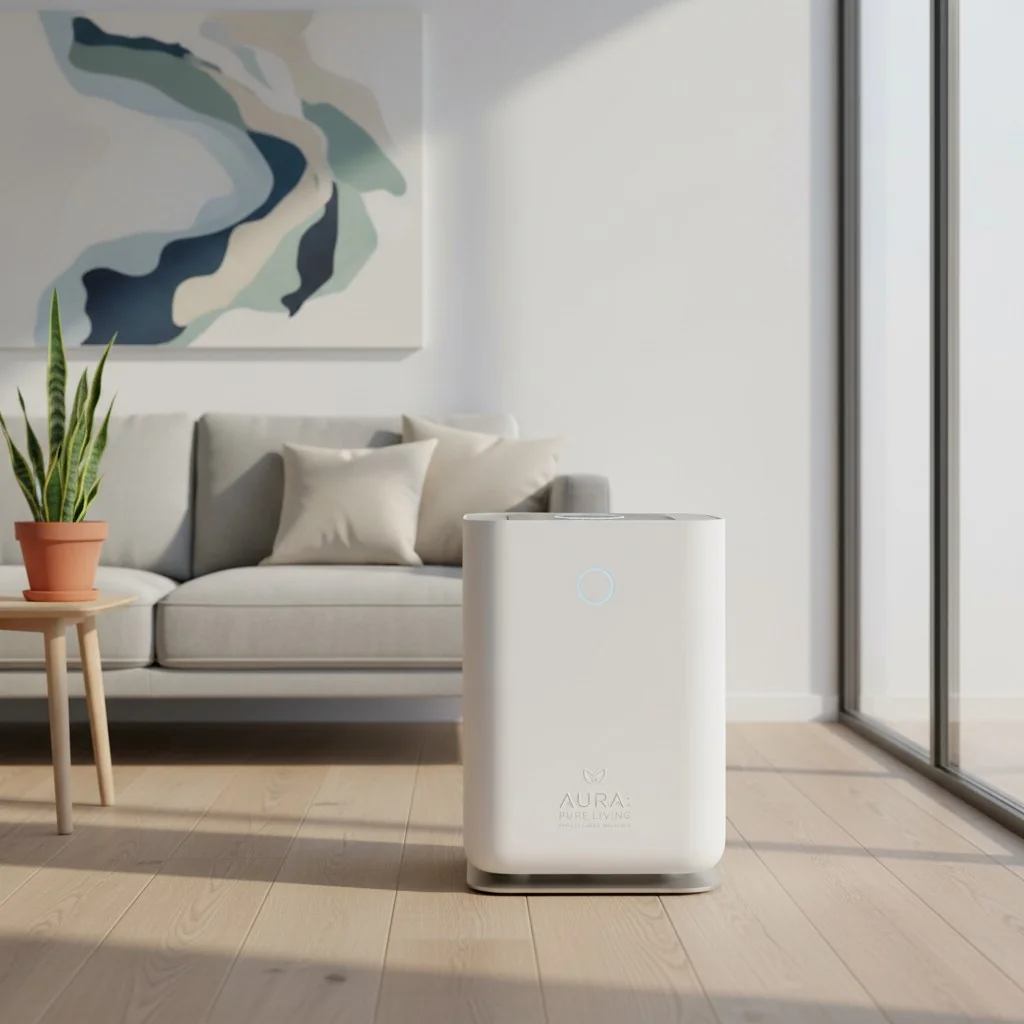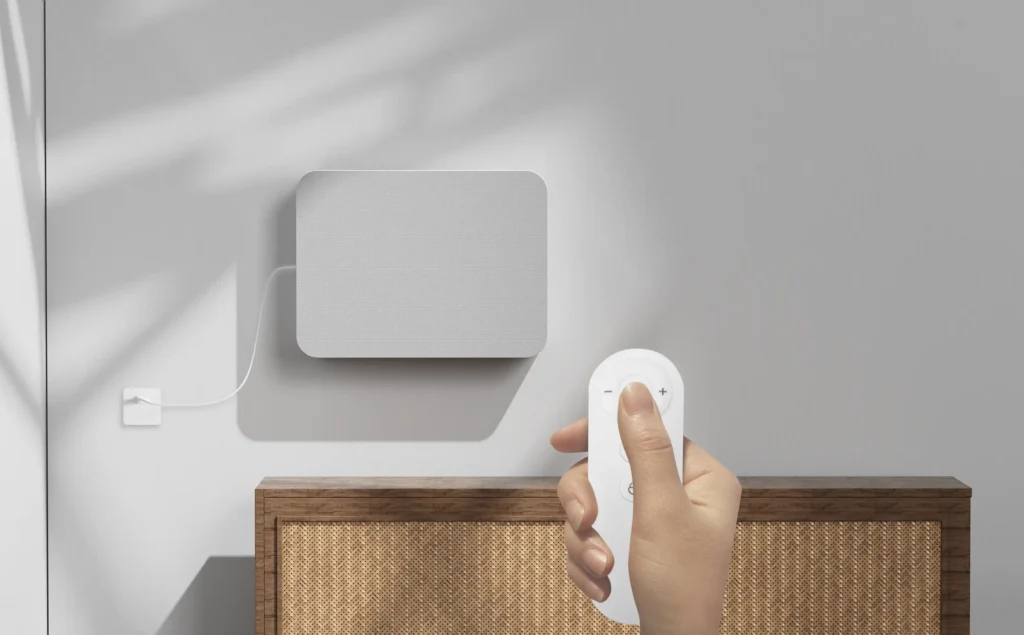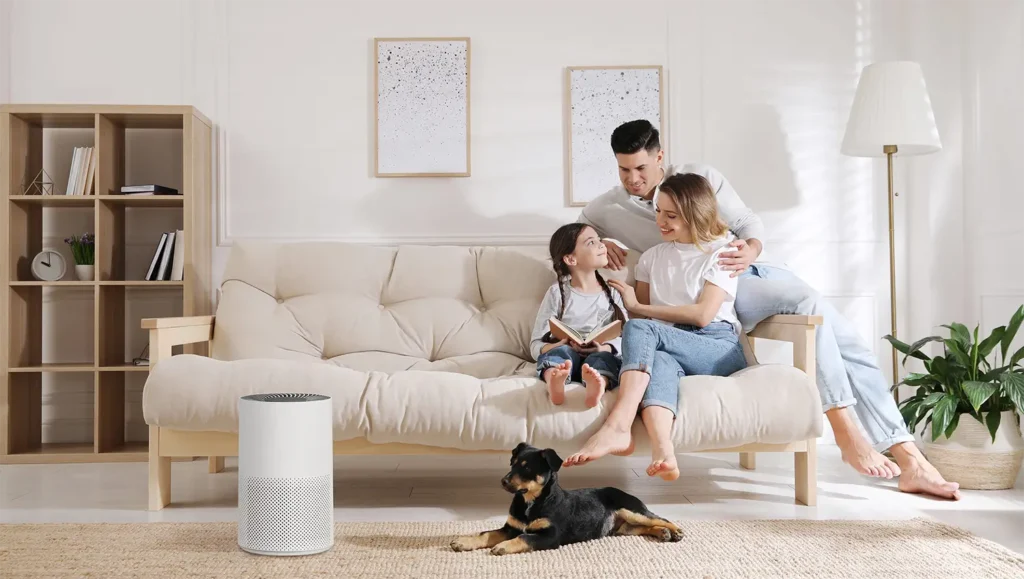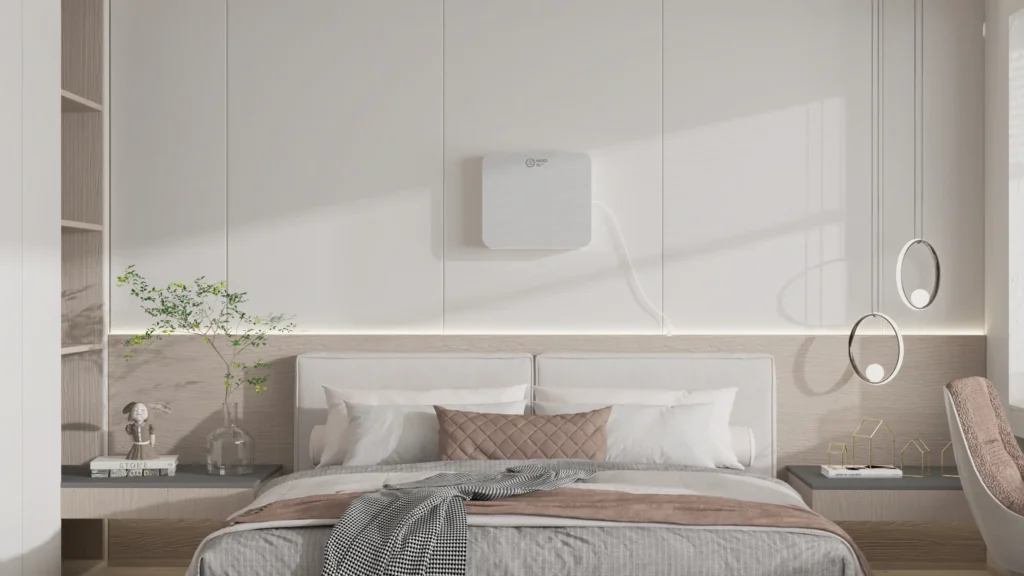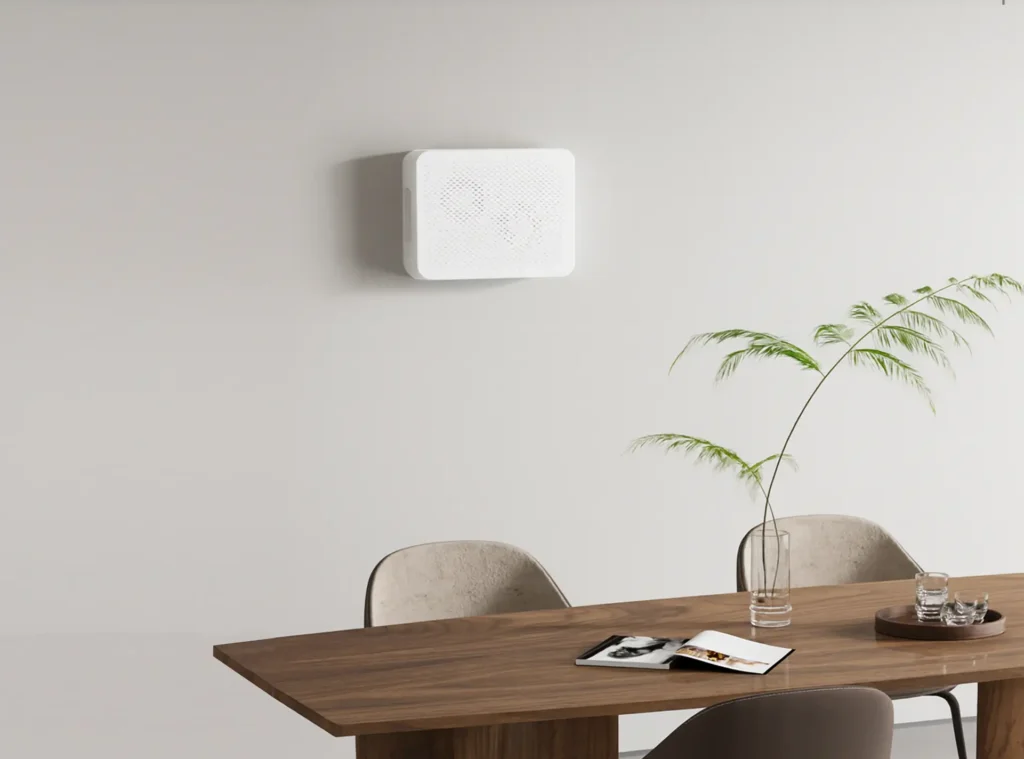First impressions matter, especially in a pet shop. A fresh, clean-smelling environment not only signals professionalism but also assures customers of the high standard of care you provide. Conversely, stale or odor-filled air can deter potential customers and leave a negative impression, regardless of your animals’ well-being.
The air in a pet shop is a complex mix of dander, fur, microbes, ammonia, and VOCs. This “Pollutant Trifecta” constantly challenges air quality, impacting the health of your animals, staff, and business success. Investing in the right air purification system is crucial for a healthier, more welcoming, and profitable environment.
The Unique Air Quality Challenges in a Pet Shop
The indoor air quality of a pet shop is uniquely demanding due to the constant presence of animals, their waste, and maintenance products. Understanding the specific nature of these contaminants, the “Pollutant Trifecta,” is crucial for effective mitigation.
The “Pollutant Trifecta” Explained
An effective air quality strategy for a pet shop must simultaneously tackle three primary categories of pollutants:
Biological Contaminants
Beyond visible fur, microscopic biological particles pose significant health risks and trigger allergies for both humans and pets:
- Pet Dander: Tiny skin flecks shed by animals, dander remains airborne and is easily inhaled. It’s a potent allergen for many people and can cause respiratory irritation and allergic reactions in sensitive animals.
- Dried Saliva and Urine Proteins: Allergenic proteins from dried saliva on fur or aerosolized urine from waste can become airborne, leading to allergic responses in both humans and pets.
- Airborne Microbes: Pet waste, even when cleaned, can introduce bacteria. Moisture on surfaces can foster mold and mildew growth, releasing spores into the air. These contribute to odors and pose direct health threats to all occupants, including animals, potentially leading to respiratory infections.
Chemical Pollutants
Chemicals require different filtration approaches than particulates, and can be harmful to both humans and pets:
- Ammonia (NH3): This pungent gas, a byproduct of animal waste breakdown, can reach harmful concentrations in enclosed spaces, irritating the respiratory systems of both animals and humans. Prolonged exposure can lead to chronic respiratory issues in pets.
- Volatile Organic Compounds (VOCs): VOCs are chemicals that easily evaporate. Sources in pet shops include cleaning products, disinfectants, air fresheners, and some pet care products. These contribute to the chemical load and can cause various health effects, including respiratory distress and neurological symptoms in sensitive animals.
- Other Environmental Pollutants: Urban pet shops may also contend with outdoor pollutants like nitrogen dioxide (NO2) and ground-level ozone (O3) from vehicle emissions, adding to the indoor toxic burden for both humans and pets.
Pervasive Odors
Odors are the sensory perception of a complex mixture of gaseous and biological pollutants. Persistent odors from animal waste, damp fur, and chemicals are a significant business challenge. They create an unwelcoming atmosphere, impacting brand reputation and customer loyalty. Effective odor control is a crucial business objective, improving comfort for both customers and the animals themselves.
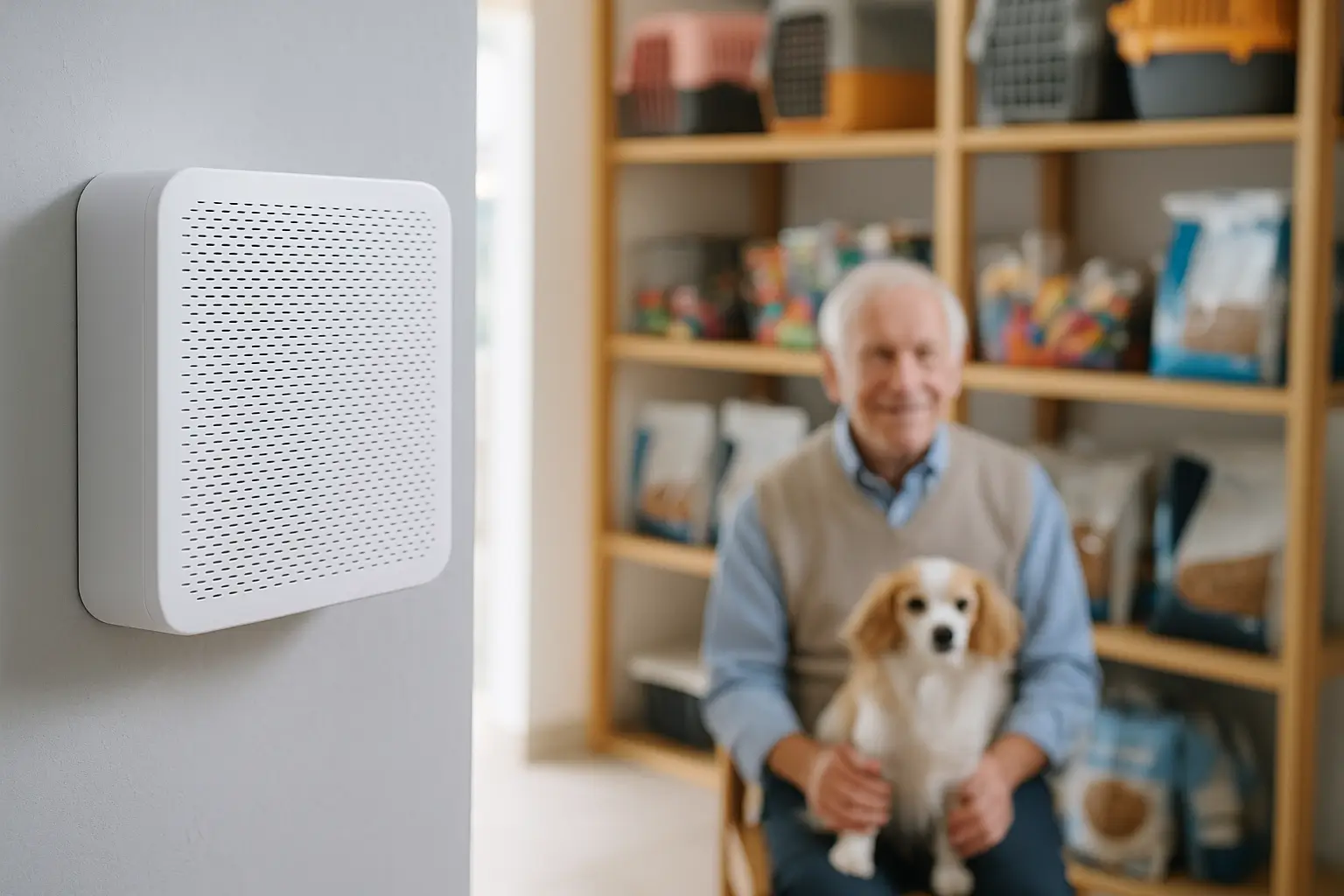
Why Residential Purifiers Don’t Make the Cut
The continuous generation of fur, dander, odors, and chemical fumes in a pet shop creates a pollutant load far exceeding that of a typical home. Standard residential air purifiers are fundamentally inadequate for this environment.
Residential units typically feature plastic housings and motors not designed for continuous 24/7 operation. Their filters, especially activated carbon, are minimal and designed for light-duty use. In a pet shop, these small filters quickly saturate, becoming ineffective within weeks and leading to frequent, expensive replacements.
Commercial-grade air purifiers, conversely, are engineered for high-load, continuous-use environments. They feature durable steel construction, powerful motors for large air volumes, and significantly larger filter media. This robust design ensures consistent performance and a more manageable total cost of ownership in demanding settings.

HisoAir's HA-D3002 pet air purifier features an ultra-large side air intake, designed to efficiently capture pet hair without clogging. Its triple filtration system comprising a pre-filter, HEPA filter, and activated carbon filter effectively removes pet hair, bacteria, and odors, providing a cleaner and more comfortable indoor environment.
Must-Have Features for a Pet Shop Air Purifier
Selecting the right air purification system requires understanding the core technologies and performance metrics essential for a pet shop. An effective system must address particulates, gases, and odors simultaneously.
The Core Filtration System (The “Filtration Triumvirate”)
An effective air purifier for a pet shop relies on a robust “Filtration Triumvirate”:
Durable, Washable Pre-Filter: The First Line of Defense
In a pet shop, the pre-filter is critical for long-term performance and cost control. It captures large particles like fur and lint, preventing them from clogging more delicate inner filters. Look for durable, ideally washable, pre-filters that can be cleaned frequently to maintain optimal airflow and extend the life of HEPA and carbon filters. This significantly reduces long-term operational costs.
True HEPA Filter: The Gold Standard for Particulates
High-Efficiency Particulate Air (HEPA) is the benchmark for removing microscopic particles. A True HEPA filter is certified to capture at least 99.97% of airborne particles as small as 0.3 microns, including common pet-related allergens like dander and mold spores. The unit’s construction is paramount; it must be properly sealed to prevent air from bypassing the filter.
Heavy-Duty Activated Carbon Filter: The Key to Odor and VOC Control
HEPA filters are ineffective against gases and odors. Activated carbon filtration is essential here, working through adsorption to chemically bond gaseous pollutants to its porous surface. For pet shops with high ammonia and VOC levels, the quantity of activated carbon is crucial. A thin carbon sheet is insufficient; a deep bed of granular activated carbon (e.g., 15+ pounds) is needed to neutralize heavy chemical and odor loads for years. Blends with zeolite or potassium iodide can target specific chemicals. Carbon filters cannot be “rejuvenated” by sun exposure; industrial heat treatment is required.
Key Performance Metrics That Actually Matter
Beyond filter types, understanding key performance metrics is crucial for selecting an effective air purifier.
ACH (Air Changes Per Hour): The Most Critical Metric
Air Changes Per Hour (ACH) measures how many times the entire air volume in a space is replaced by clean air per hour. For high-pollutant zones like grooming areas and animal housing, 6-8 ACH is recommended to continuously remove contaminants, ensuring a healthier environment for both animals and staff.
CFM (Cubic Feet per Minute): The Power Behind the Cleaning
Cubic Feet per Minute (CFM) indicates the volume of air an air purifier processes per minute, directly related to its fan power. Calculate required CFM using: Required CFM = (Room Length × Room Width × Room Height × Desired ACH) / 60. Be wary of manufacturers’ “coverage area” claims, which often don’t account for high pollutant loads.
Safety First: Avoid Ozone-Generating Devices
Ozone-producing air purification technologies must be strictly avoided. Ozone (O3) is a lung irritant harmful to both animals and humans. It masks odors rather than removing them. Always choose ozone-free purifiers, certified by CARB or UL 2998 Zero-Ozone.
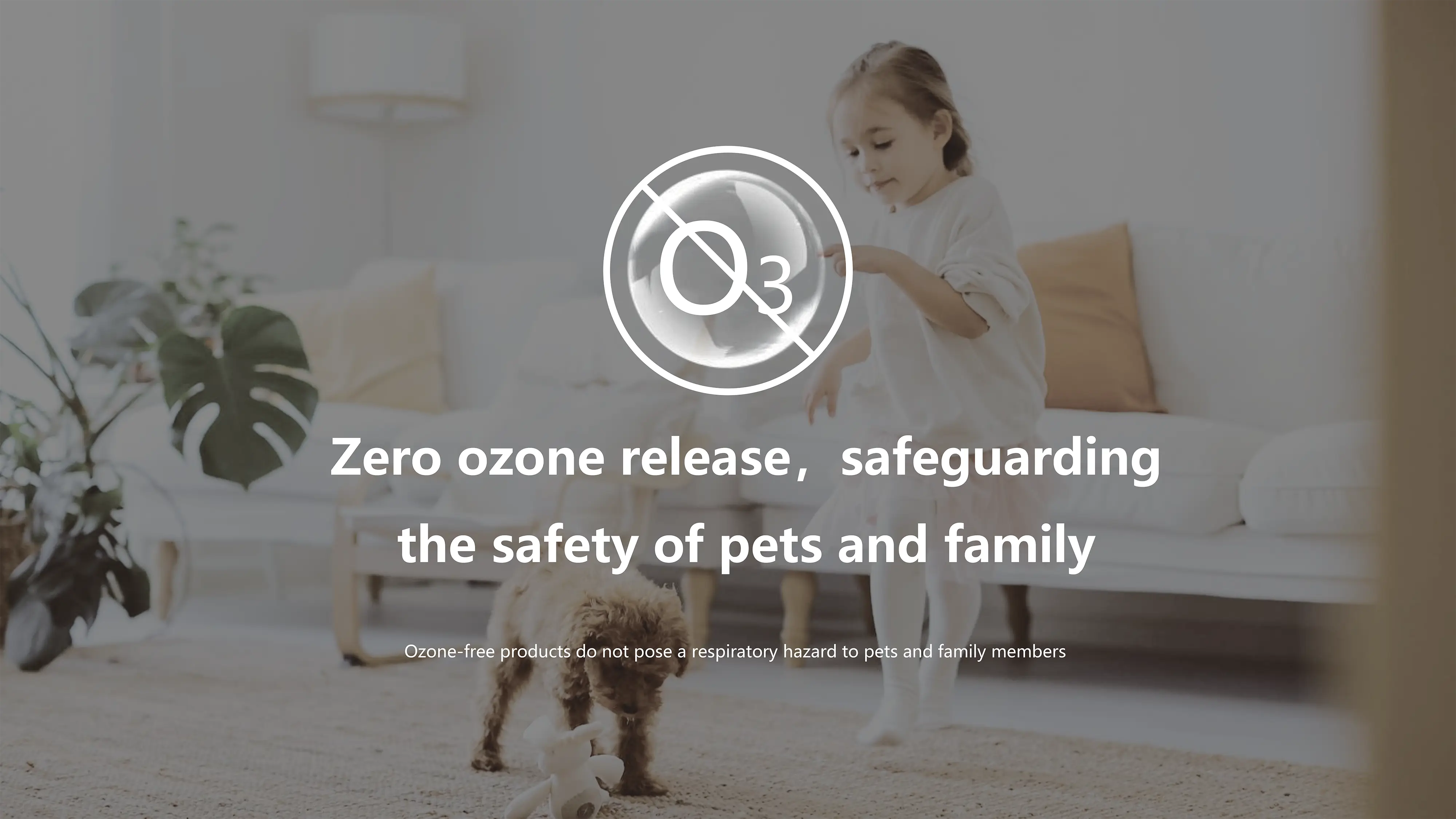
The Ideal Air Purification Solution for Pet Shops: Wall-Mounted Units
For pet shops, practical considerations like space, noise, and aesthetics are as important as filtration. Wandmontierte Luftreiniger offer a blend of high performance, discreet design, and operational efficiency.
The Space-Saving Advantage
In a busy pet shop, floor space is premium. Bulky traditional purifiers obstruct walkways and detract from aesthetics. Wall-mounted units free up valuable floor space, improving traffic flow and creating a cleaner, more organized appearance. They are installed out of the way, blending seamlessly with the interior, less noticeable to customers, and less accessible to curious pets.
For a truly effective and seamless solution, consider a wall-mounted air purifier like the HisoAir HA380/HA400. These units are specifically designed for commercial spaces, offering powerful purification without sacrificing aesthetics or floor space. HisoAir’s commitment to “Maximum Purification, Minimum Noise” makes them an excellent choice for demanding pet shop environments.
Here’s why HisoAir wall-mounted purifiers are ideal for pet shops:
-
Sleek, Wall-Mounted Design: At just 144mm thin, the HisoAir HA380/HA400 mounts elegantly on any wall, keeping it away from curious pets and busy foot traffic. This ultra-slim profile integrates seamlessly into your shop’s decor, enhancing its visual appeal and contributing to a safer environment.
-
Quiet Operation with Decibel Cancellation™ Technology: Noise stresses animals and detracts from customer experience. HisoAir’s innovative Decibel Cancellation™ Technology allows operation as low as 25 dB(A), ensuring maximum filtration with minimal noise. This whisper-quiet operation creates a peaceful, calming environment for animals, customers, and staff, reducing stress and promoting well-being for all.
-
Powerful Performance for Demanding Environments: The HisoAir HA380/HA400 delivers a Clean Air Delivery Rate (CADR) of up to 380m³/h (223 CFM), effectively cleaning air in rooms up to 50m² (538 sq ft). This powerful performance ensures fast, efficient purification, ideal for public retail areas, high-traffic grooming stations, and animal housing rooms. The dual-fan boosted performance ensures stronger airflow and faster purification for larger or more demanding environments, directly benefiting the respiratory health of animals.
-
Fortschrittliches Mehrschicht-Filtersystem: To combat the “Pollutant Trifecta,” HisoAir wall-mounted purifiers feature a comprehensive multi-layer filtration system. This includes a high-dust capacity PET pre-filter for large particles, a HEPA 13 filter (99.97% of 0.3 microns particles), and an activated carbon filter for odors and VOCs. An antibacterial agent inhibits microbial growth, preventing secondary pollution and ensuring a healthier environment for sensitive animal respiratory systems.
-
Smart Features for Optimal Air Quality Management: HisoAir purifiers include intelligent features for simplified air quality management. The ultra-sensitive smart sensing system provides real-time PM2.5 monitoring. In auto mode, the purifier intelligently adjusts fan speed for optimal purification without constant manual intervention. This ensures continuous air quality optimization, even during peak hours, protecting both human and animal health. Smart touch control and screen-off mode enhance convenience and ensure an undisturbed environment.
By choosing a wall-mounted solution like the HisoAir HA380/HA400, pet shop owners can ensure superior air quality, optimize space, and provide a more pleasant and healthier environment for everyone. It’s a modern solution reflecting a commitment to excellence.
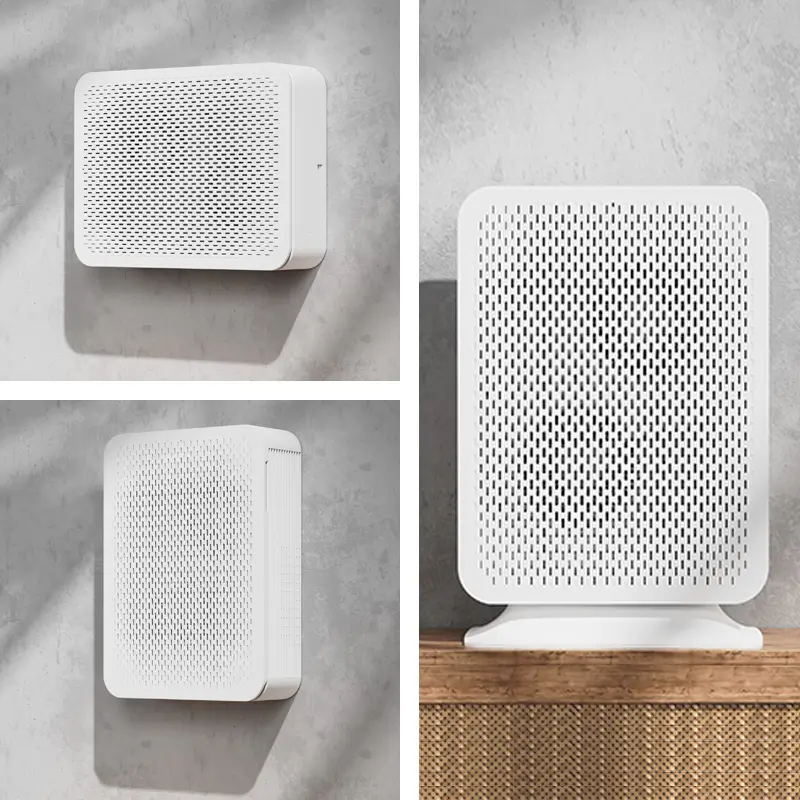
HisoAir's dual-purpose air purifier, designed for both floor-standing and wall-mounted use, features a durable ABS panel with a grille structure that effectively captures pet hair. It comes equipped with a PET pre-filter that traps hair and large particles, helping to extend the lifespan of the built-in HEPA filter. Additionally, an optional activated carbon filter can be customized to remove odors and further enhance air quality.
Strategic Implementation for a Healthier Shop
Acquiring the right air purification system is only half the battle; strategic implementation and consistent operation are vital to maximizing its effectiveness.
Zone-Based Placement: Targeting Pollutants Where They Originate
Different areas of your pet shop present varying air quality challenges. Adopt a zone-based strategy, positioning purifiers to tackle pollutants at their source:
- Grooming Areas: High-particulate zones with hair, dander, and chemical fumes. Place purifiers with robust pre-filters and strong HEPA filtration directly in or near grooming stations to protect groomers and animals from airborne irritants.
- Animal Housing Areas: Primary sources of dander, fur, ammonia, and odors. Position purifiers with substantial activated carbon filters to neutralize gaseous pollutants, significantly improving the living conditions and respiratory health of the animals.
- Retail and Lobby Areas: Maintain a fresh, inviting atmosphere. A balance of particulate and odor filtration is key to managing lingering smells, enhancing the customer experience and ensuring a pleasant environment for pets on display.
- Restricted Access Areas: Even back rooms and storage benefit from purification, especially if housing animals or storing cleaning supplies. This prevents odor migration and improves staff well-being, while also protecting any animals temporarily housed there.
Strategic placement optimizes performance and extends filter life.
Continuous Operation: Pollutants Don’t Take Breaks
Pollutants are generated continuously, 24/7. For optimal air quality, your air purifiers should run continuously. This prevents contaminants from accumulating to unhealthy levels. Modern, energy-efficient wall-mounted units like the HisoAir HA380/HA400 are designed for continuous operation with minimal energy consumption and noise. Their smart sensors and auto modes adjust fan speed based on real-time air quality, ensuring efficient operation without constant manual oversight, and providing consistent clean air for all.
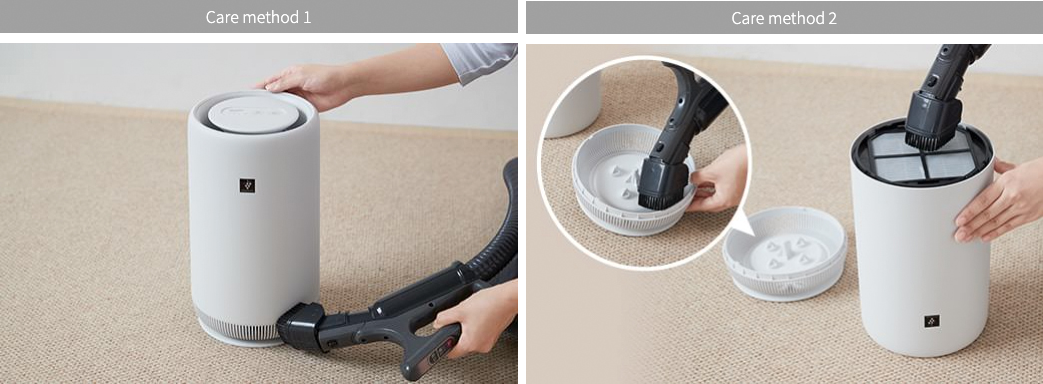
Easy Maintenance: Simple Steps for Lasting Performance
Regular maintenance ensures optimal performance and extends lifespan:
- Weekly: Vacuum Exterior Vents: Remove accumulated dust, fur, and lint to prevent blockages and ensure unrestricted airflow.
- Monthly: Clean Washable Pre-Filters: For units with washable pre-filters, clean them monthly to protect HEPA and carbon filters from premature clogging.
- As Needed: Replace Main Filters: Lifespan varies by pollutant load. Look for reduced airflow, increased noise, or returning odors. Always use genuine replacement filters.
Following these guidelines ensures your air purification investment delivers maximum benefits.
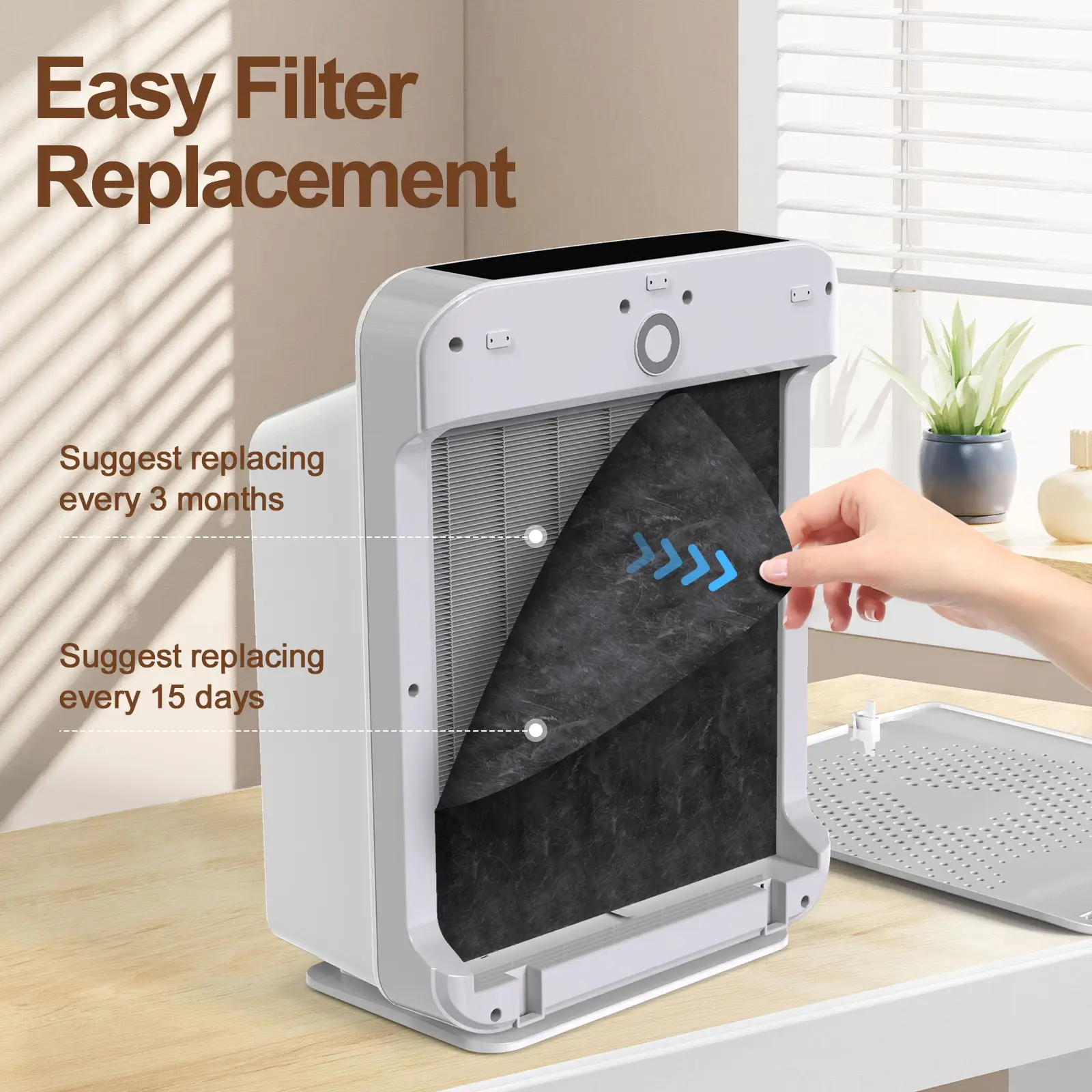
For shops with pets, a pre-filter is essential in an air purifier to capture pet hair and allow for regular cleaning such as with a vacuum thereby extending the lifespan of the internal filters.
Die HisoAir HA360 is equipped with an activated carbon pre-filter that not only removes odors but is also easy to clean and replace. Unlike traditional carbon filters that require replacement every 3 months, HA360’s pre-filter can be peeled off and replaced with ease. This helps reduce the load on the HEPA filter, extending its typical lifespan of 6 months, improving efficiency, and lowering maintenance costs.
Conclusion: Clean Air is a Smart Investment
Indoor air quality is critical in pet retail. The unique challenges of a pet shop, with its biological, chemical, and odor pollutants, demand effective solutions.
Investing in a commercial-grade air purification system is a strategic investment in your business’s core pillars: the health of your animals, the well-being of your staff, and your customers’ experience. It translates into improved animal health, a healthier workforce, enhanced customer satisfaction, a stronger brand reputation, and ultimately, increased sales and profitability.
Ready to transform your pet shop into a haven of clean, fresh air? Explore how a HisoAir wall-mounted air purifier can make a tangible difference for your business, your animals, and your valued customers. When the air is clean, everyone breathes easier, and your business can truly flourish.


